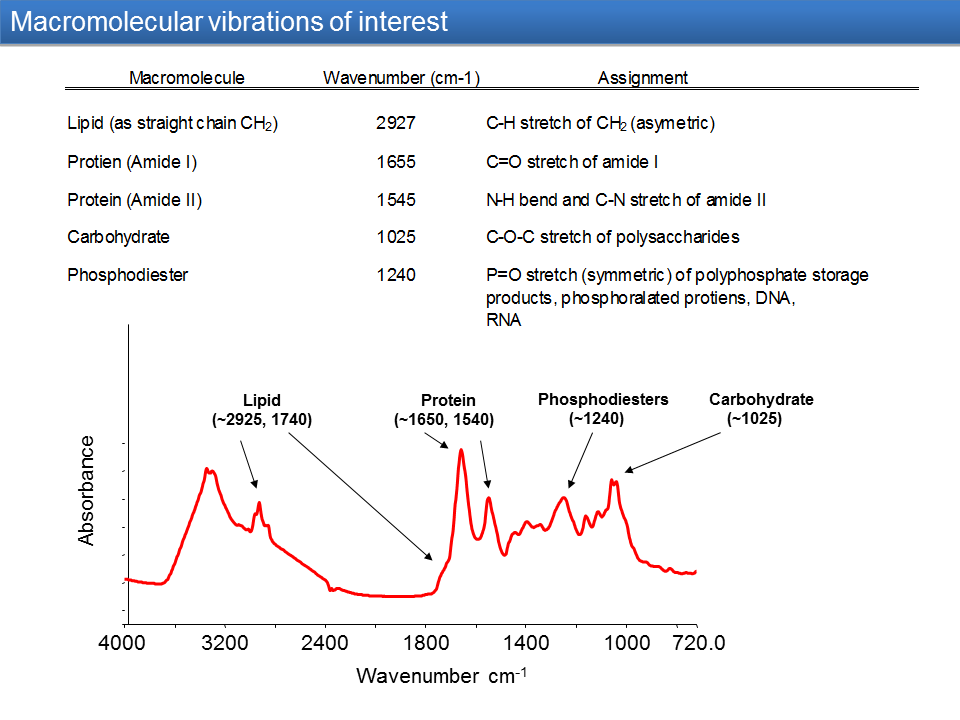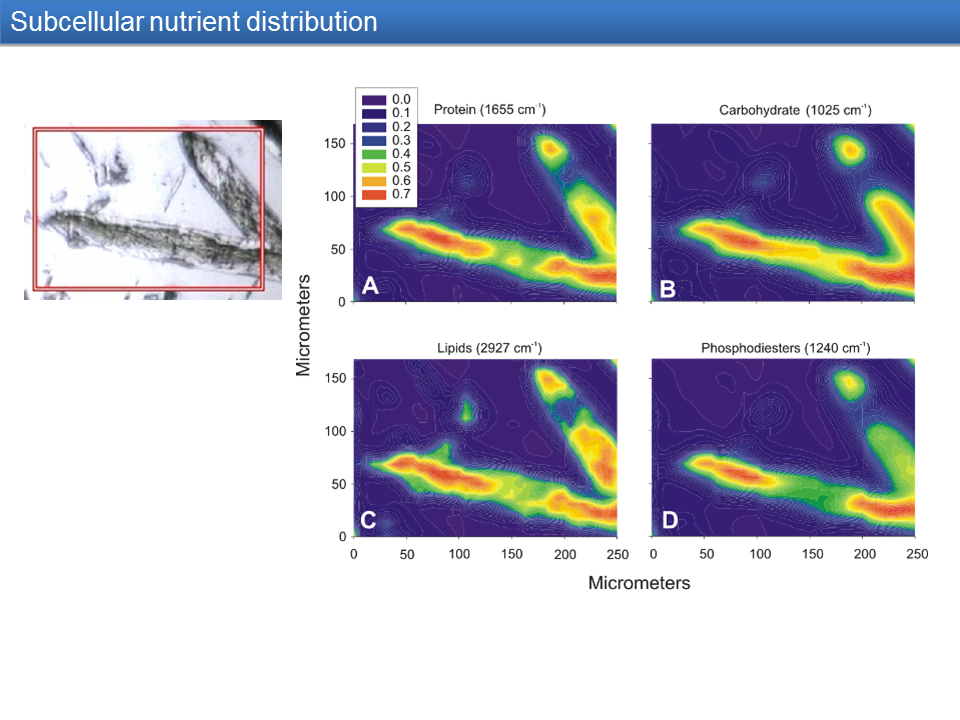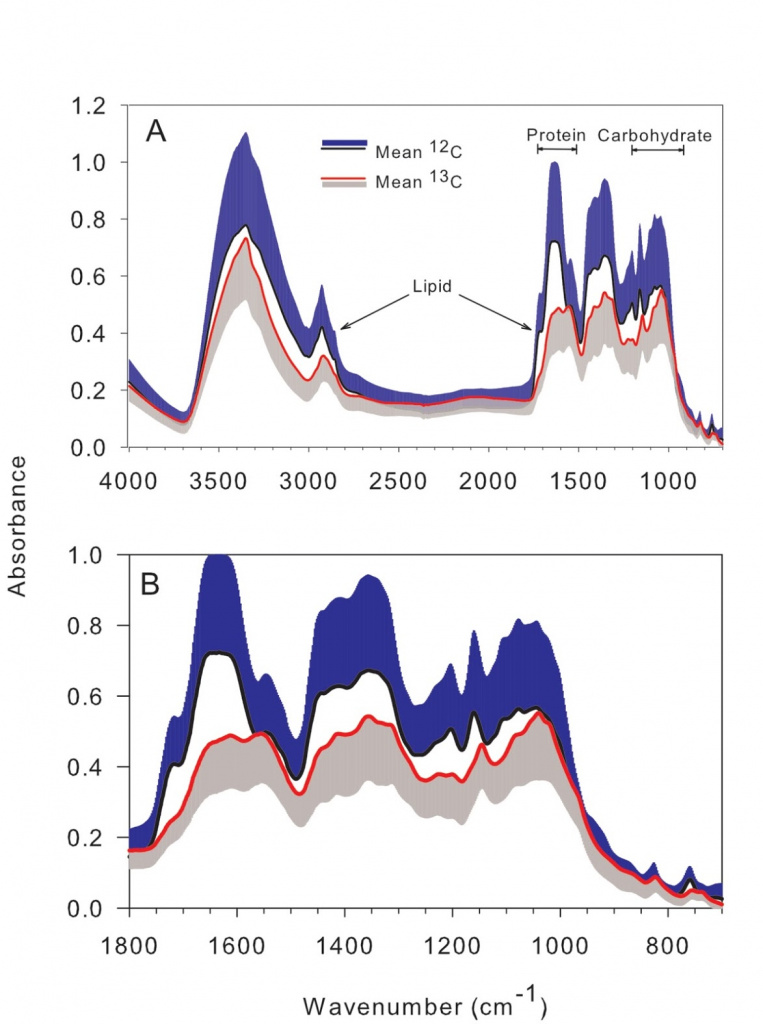Fourier Transform Infrared (FT-IR) microspectroscopy provides an in situ, nondestructive chemical analysis of individual algal cells. Algae play key roles in nutrient cycling and energy flow through aquatic ecosystems and are pivotal in the sequestration of inorganic nutrients (e.g., carbon, nitrogen, and phosphorus) and transformation into organic forms. However, most methods used to measure algal nutritional and physiological changes are limited to detecting whole community responses because of the relatively large quantity of material needed for analysis (i.e., milligrams to grams). The spatial resolution achievable with infrared microspectroscopy allows for the analysis of macromolecular pools (e.g., proteins, lipids, carbohydrates) in individual cells that allows species specific measurements within heterogeneous microscopic communities.
Algal species vary in carbon (C) need and uptake rates. Understanding differences in C uptake and cellular allocation among species from natural communities will bring new insight into many ecosystem process questions including how species changes will alter energy availability and C sequestration in aquatic ecosystems. A major limitation of current methods that measure algal C incorporation is the inability to separate the response of individual species from mixed-species assemblages. We used Fourier-transform infrared microspectroscopy to qualitatively measure inorganic 13C isotope incorporation into individual algal cells.


